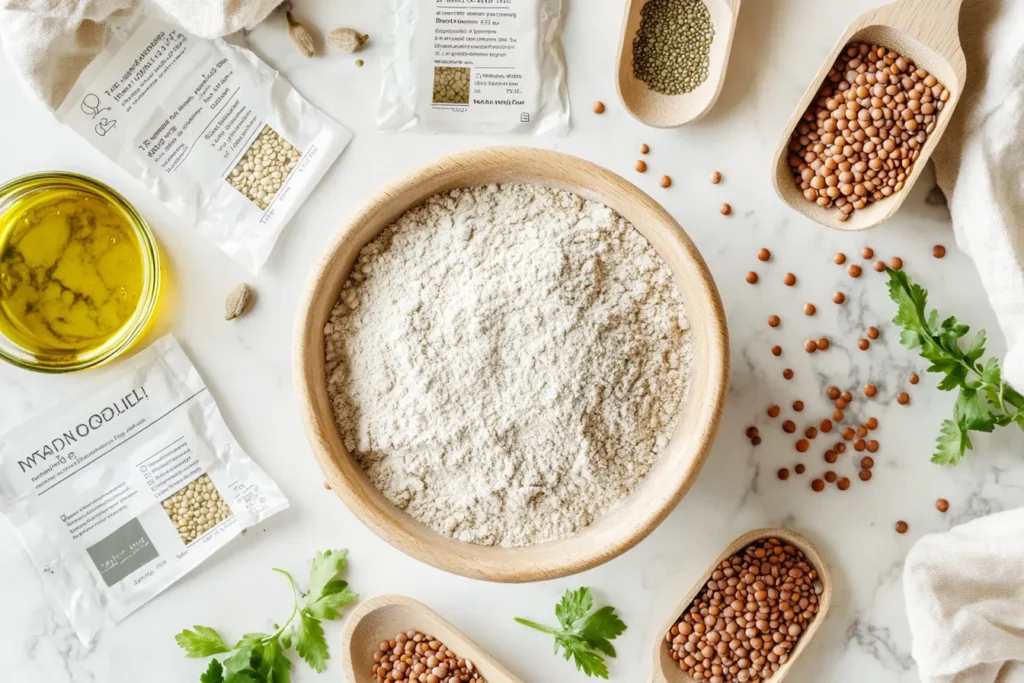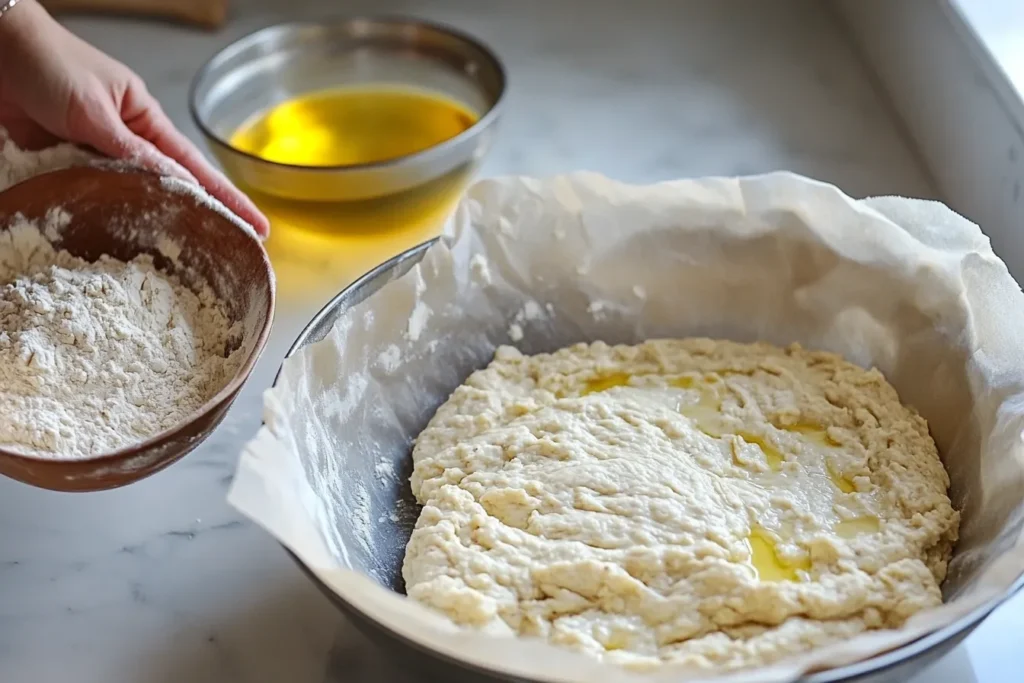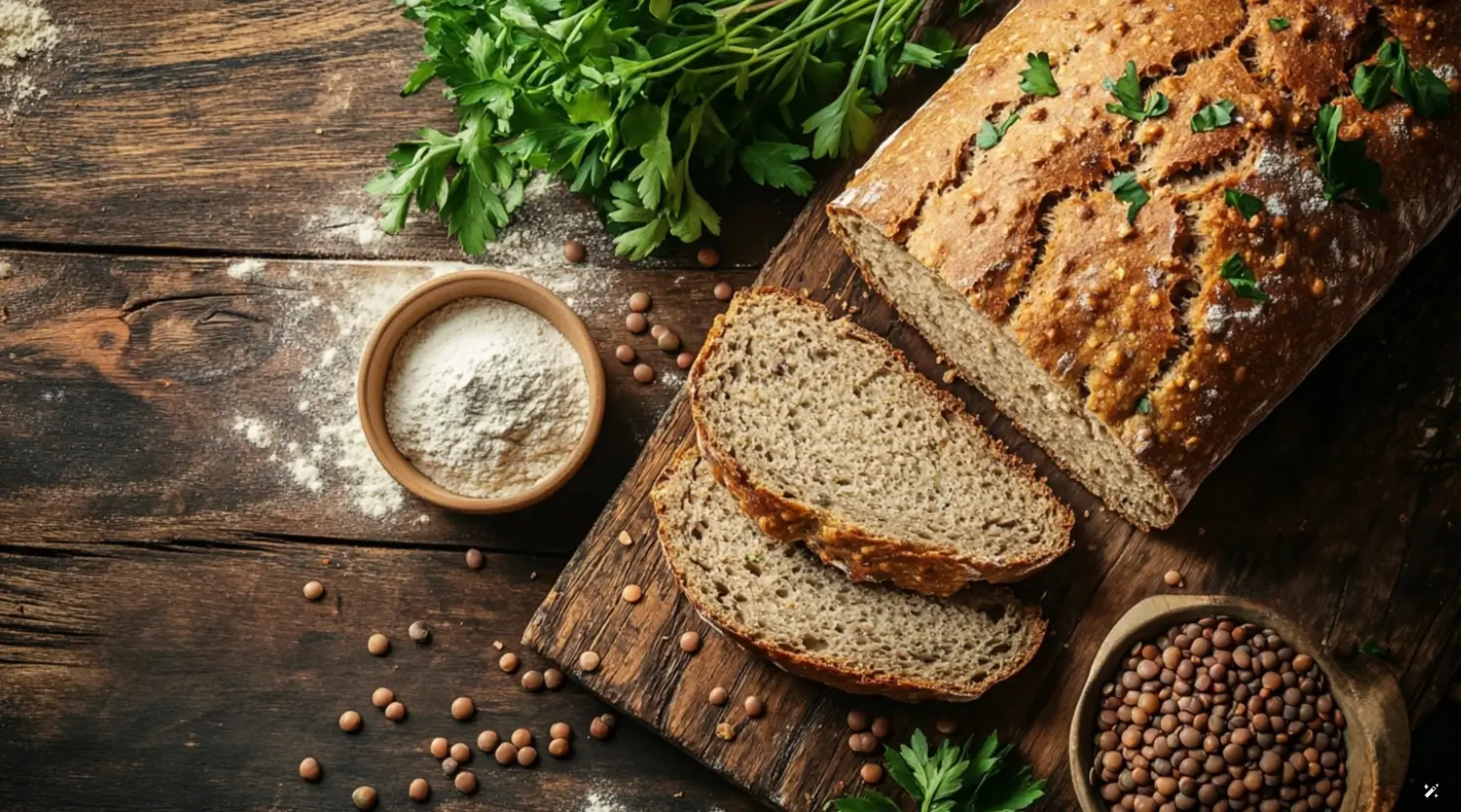Lentil bread has been gaining popularity as a healthy, protein-packed alternative to traditional bread. Made from nutrient-rich lentils, this bread offers a unique taste and texture while providing numerous health benefits. But if you’re curious how many calories are in lentil bread, this guide will walk you through the calorie count, nutritional benefits, and how it compares to other bread types. Let’s dive in and explore why lentil bread might be your next go-to option for meals.
Introduction to Lentil Bread
What Is Lentil Bread?
Lentil bread is a type of bread made using lentils as its primary ingredient, often in place of wheat flour. Lentils, which are legumes, are ground into a flour or blended with water to form a batter. This bread is loved for being gluten-free, high in protein, and rich in fiber, making it a favorite among health-conscious eaters.
Unlike traditional bread, lentil bread has a denser texture and a slightly nutty, earthy flavor. It’s versatile, too—you can find recipes for flatbreads, sandwich loaves, or even spiced versions. Whether you’re looking to reduce gluten or increase your protein intake, lentil bread offers a nutritious solution.
Nutritional Benefits of Lentils in Bread
Lentils are a powerhouse of nutrients, which makes lentil bread a smart choice. They’re packed with plant-based protein, making this bread ideal for vegetarians and vegans. Lentils are also high in dietary fiber, which supports digestion and helps keep you full longer. Plus, they’re a rich source of essential vitamins and minerals, like iron, magnesium, and potassium.
When baked into bread, lentils retain these nutrients, providing a satisfying alternative to refined flour-based bread. With fewer empty carbs and more protein and fiber, lentil bread aligns with modern dietary goals.

Calorie Content in Different Types of Lentil Bread
Calorie Count Per Slice
When considering how many calories are in lentil bread, the answer depends on the specific recipe. A standard slice of lentil bread typically contains 80-120 calories, making it a healthier alternative to white bread, which can range from 120-150 calories per slice. Gluten-free lentil bread, often made with fewer additives, may have similar calorie content or slightly less, depending on the ingredients used.
Lentil flatbreads, often used for wraps or side dishes, contain fewer calories, usually around 60-90 per piece. Their thinner texture and minimal use of oil contribute to the lower calorie count, making them a great choice for those watching their intake.
Factors That Influence Calorie Count
Several factors affect the calorie content of lentil bread. Recipes that include additional ingredients, like olive oil, seeds, or nuts, can significantly raise the calorie count. For instance, adding sunflower seeds or flaxseeds can increase both the fat and calorie levels, but they also boost the nutritional value by adding omega-3s and fiber.
Portion size also plays a role. Homemade lentil bread slices can vary in thickness, which directly impacts the calorie count. To stay within a desired calorie range, aim for evenly sliced portions. Finally, cooking methods—like frying flatbreads instead of baking—can increase calories due to added oils.
How Does Lentil Bread Compare to Other Bread Types?
Lentil Bread vs. Traditional Bread
Lentil bread stands out for its lower calorie content and higher nutritional density compared to traditional bread. White bread typically lacks fiber and protein, while lentil bread provides up to 6-8 grams of protein and 4-5 grams of fiber per slice. These nutrients help keep you fuller longer, making lentil bread a smarter option for weight management.
In terms of calories, lentil bread generally falls within the same range as whole-grain bread but offers the added benefit of being gluten-free, depending on the recipe. If you’re looking to reduce refined carbs in your diet, lentil bread is a worthy substitute.
Lentil Bread vs. Gluten-Free Bread
Many gluten-free bread options rely on starch-heavy ingredients like tapioca or rice flour, which can spike blood sugar levels and add empty calories. In contrast, lentil bread, made from lentil flour or cooked lentils, provides a more balanced nutritional profile. It’s higher in protein and fiber, making it a better choice for sustained energy.
So, how many calories are in lentil bread when compared to these alternatives? The answer reveals that lentil bread not only matches calorie counts but often surpasses traditional and gluten-free bread in nutritional benefits.
Recipes and Preparation Methods
Classic Lentil Bread Recipe
Making lentil bread at home is surprisingly simple and allows you to control the ingredients, keeping it healthy and fresh. Here’s a straightforward recipe to get you started:
Ingredients:
- 1 cup cooked lentils (red or green)
- 1 ½ cups whole wheat flour or gluten-free flour
- ½ cup water
- 1 tbsp olive oil
- 1 tsp baking powder
- A pinch of salt
Instructions:
- Preheat your oven to 375°F (190°C).
- Blend the cooked lentils with water until smooth.
- In a mixing bowl, combine the lentil puree with the remaining ingredients. Mix until it forms a dough.
- Shape the dough into a loaf or flatbread, depending on your preference.
- Place on a baking sheet lined with parchment paper and bake for 30-40 minutes or until golden brown.
This recipe yields a dense, nutritious bread with around 90-100 calories per slice, depending on the size.

Low-Calorie Variations
To lower the calorie content further, try these substitutions:
- Use a non-stick spray instead of olive oil.
- Add grated zucchini or carrots for bulk and moisture, reducing the need for extra oil.
- Replace half the flour with almond flour or oat flour for fewer carbs.
For a sweeter version, include a teaspoon of honey or maple syrup, but keep in mind this will slightly increase the calorie count.
For more creative bread recipes, check out this blueberry lentil bread recipe for a delightful twist.
Health Benefits and Considerations
Benefits of Adding Lentil Bread to Your Diet
Lentil bread is packed with nutrients, making it a fantastic addition to your meals. Lentils are naturally high in protein, with one slice of lentil bread providing up to 8 grams. This makes it a perfect choice for vegetarians or anyone looking to increase their protein intake.
Another benefit is the fiber content. Lentil bread contains 3-5 grams of fiber per slice, promoting better digestion and longer-lasting energy. It’s also low in glycemic index, meaning it won’t spike your blood sugar as much as traditional bread. This makes it ideal for people managing diabetes or those looking for sustained energy throughout the day.
Possible Drawbacks to Watch For
While lentil bread has many advantages, it’s not without its considerations. Homemade versions can be calorie-dense if you use high-fat ingredients like seeds or nuts. Additionally, lentil bread can be quite dense and might not suit everyone’s taste preferences if they’re used to lighter, fluffier bread types.
It’s also essential to note that lentil bread doesn’t contain gluten unless combined with other flours. For those who aren’t gluten-free, this could mean a change in texture compared to wheat-based bread.
So, how many calories are in lentil bread? The answer depends on how it’s made, but with mindful preparation, it can be a delicious, nutrient-packed alternative to traditional bread.
FAQs About Lentil Bread
How Many Calories Are in a Slice of Lentil Bread?
If you’ve ever wondered, how many calories are in lentil bread, the answer varies depending on the recipe. A standard slice contains between 80-120 calories. Factors like added oil, seeds, or sweeteners can influence the final count. For lower-calorie options, homemade lentil bread without oil or additional fats is a great choice.
Is Lentil Bread Good for Weight Loss?
Yes! Lentil bread is an excellent option for weight loss. Its high protein and fiber content help keep you full for longer, reducing the likelihood of overeating. With fewer refined carbs than white bread, it provides sustained energy without spiking blood sugar. However, portion control is key, as calorie counts can add up with larger slices or additional toppings.
Can You Make Lentil Bread Without Oil?
Absolutely. Lentil bread can be made without oil by substituting ingredients like applesauce or mashed bananas for moisture. Non-stick sprays or silicone baking mats also eliminate the need for oil during cooking. This small change can significantly reduce the calorie count per slice.
Does Lentil Bread Contain Gluten?
Traditional lentil bread is naturally gluten-free, making it a suitable choice for those with gluten sensitivities. However, some recipes include wheat flour for better texture, so always check the ingredients if you’re avoiding gluten.
Conclusion: Is Lentil Bread the Right Choice for You?
Summing Up the Calorie Content and Benefits
So, how many calories are in lentil bread? On average, a slice contains fewer calories than traditional bread, making it a healthier option for most diets. Beyond its calorie count, lentil bread is rich in protein, fiber, and essential nutrients, making it a nutrient-dense alternative to other bread types.
Whether you’re looking for a gluten-free option or simply want to try something new, lentil bread checks many boxes. Its versatility in recipes and ability to keep you feeling full make it a practical addition to your meals.
Encouraging Experimentation with Lentil Bread
If you’re ready to get creative in the kitchen, lentil bread is a great place to start. Try different recipes, experiment with toppings, or incorporate it into your favorite dishes. Its unique flavor and texture may surprise you, and you’ll be adding a healthy twist to your diet in the process.
Exploring Variations of Lentil Bread
Flavorful Additions to Lentil Bread
If you’re wondering, how many calories are in lentil bread when you add different ingredients, the answer depends on what you choose. Popular additions include herbs like rosemary or thyme, which add minimal calories while boosting flavor. For a spicy twist, try adding chili flakes or cumin seeds.
Sweet variations are also an option. Adding ingredients like raisins or a teaspoon of honey can transform lentil bread into a delicious breakfast treat. However, keep in mind that these sweeteners will increase the calorie count slightly.
If you enjoy a nutty texture, sprinkle sunflower seeds or chopped walnuts into the batter. These ingredients add healthy fats and protein but will also make the bread more calorie-dense.
Experimenting with Cooking Techniques
Lentil bread is incredibly versatile and adapts well to different cooking methods. For a lighter texture, steam the batter to create a soft and moist loaf. If you prefer a crisp crust, bake it at a higher temperature for the final 10 minutes.
Frying small pieces of lentil bread in olive oil can turn them into crispy crackers, perfect for dipping. These creative techniques allow you to enjoy lentil bread in new and exciting ways while keeping an eye on calorie content.
Using Lentil Bread in Everyday Meals
Perfect Pairings for Lentil Bread
Lentil bread is a versatile base for countless meals. Use it to make sandwiches packed with fresh vegetables and lean proteins like grilled chicken or tofu. Its dense texture also makes it ideal for open-faced sandwiches, topped with avocado, eggs, or smoked salmon.
For a light dinner, pair lentil bread with a hearty soup or stew. Its high fiber content complements dishes like lentil soup or creamy tomato bisque. If you’re hosting, cut lentil bread into bite-sized pieces and serve them as an appetizer with hummus or yogurt dip.
Lentil Bread for Special Diets
For those on gluten-free or vegan diets, lentil bread is a game-changer. It’s naturally gluten-free (unless combined with wheat flour) and can be made vegan by skipping dairy-based additives. For low-calorie diets, focus on recipes with minimal added fats or sugars.
So, how many calories are in lentil bread when used in different meals? The flexibility of this bread ensures it fits seamlessly into almost any dietary plan while keeping calories in check.

